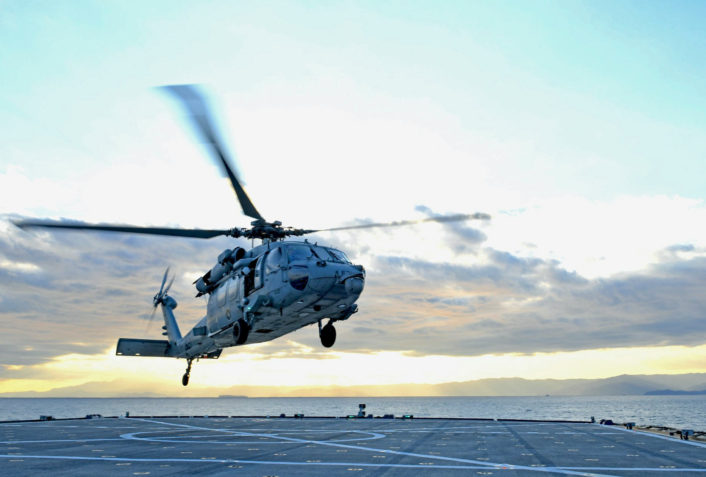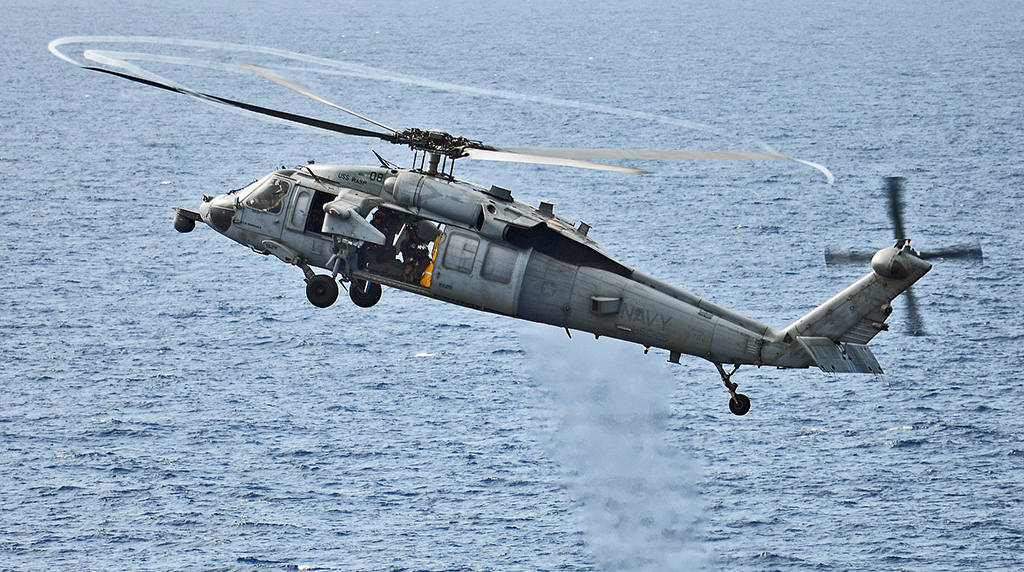Joint Japanese/U.S. Rescue Saves Crew, Multiple Ships Involved in Search and Rescue.
A dramatic multinational rescue took place in the Philippine Sea off the island of Okinawa on Saturday when a U.S. Navy MH-60S with five crewmen on board went down in the open ocean. The five crewmembers were located and rescued by a joint Japanese/U.S. search and rescue effort, according to reports from the U.S. Navy’s 7th Fleet. The U.S. Navy said that, “The MH-60 assigned to Blue Ridge went down while conducting routine operations at approximately 5:15 p.m. local time” on Jan. 25, 2020.
“Three aircrew were recovered by a Japan Air Self-Defense Force UH-60 search and rescue helicopter, and the other two were recovered by a USS Blue Ridge MH-60S helicopter,” Said an official statement from 7th Fleet spokespersons.
Additional reports said five of the three aircrew were sent to U.S. Naval Hospital Okinawa, in Okinawa, Japan, for evaluation and two are back aboard the USS Blue Ridge.
According to a report in the U.S. Naval Institute News by reporter Sam LaGrone, “The MH-60S was operating from 7th Fleet command ship USS Blue Ridge (LCC-19) when it went down about 5:15 p.m. local time, read a statement from the Navy.”
Japan Air Self-Defense Force, Japan Maritime Self-Defense Force, Japanese Coast Guard, USS America (LHA 6), USS Blue Ridge (LCC 19) and the U.S. Air Force all participated in the search and rescue.
Weather conditions in the region at the time of the rescue and forecasted until Sunday were reported by Buoyweather.com as, “Strong NE winds with very choppy seas. Small Craft Advisory. Moderate very short period waves. Winds: NE 23 to 31 knots. Seas: NE 8 feet at 6 seconds.”

The MH-60S Knighthawk helicopter is a variant of the Blackhawk family of military helicopters. The aircraft began full-rate production in 2002 and was first deployed aboard the USS Essex in 2003.
Detailed information from the reference resource naval-technology.com said that the MH-60S, “uses the baseline structure of the Black Hawk with Seahawk T-700-GE-401C engines, hover-in-flight refueling and fuel dumping. It also has the Seahawk’s rotor system, including the automatic rotor blade folding system, rapid folding tail pylon, transmission and drive train with improved durability gearbox, rotor brake and automatic flight control computer. The MH-60S uses the Seahawk rescue hoist for search and rescue missions and the naval cockpit doors. The MH-60S uses the Black Hawk airframe, which provides the larger cabin volume and double-doors needed for cargo and passenger transport, enabling troops to embark and disembark quickly. The MH-60S also retains the Black Hawk’s provisions for mounting the external pylons to carry stores and equipment, providing the added capability to carry out a wide range of missions. The MH-60S has the Black Hawk’s 9,000lb external cargo hook, gunner’s window, landing gear with tie-downs and wire strike protection, along with hover IR suppresser, automatic stabilization equipment and fuel cells. New design features incorporated into the Knighthawk include the tail cone bulkhead and the large cabin is fitted with a new cabin cargo handling system.”













